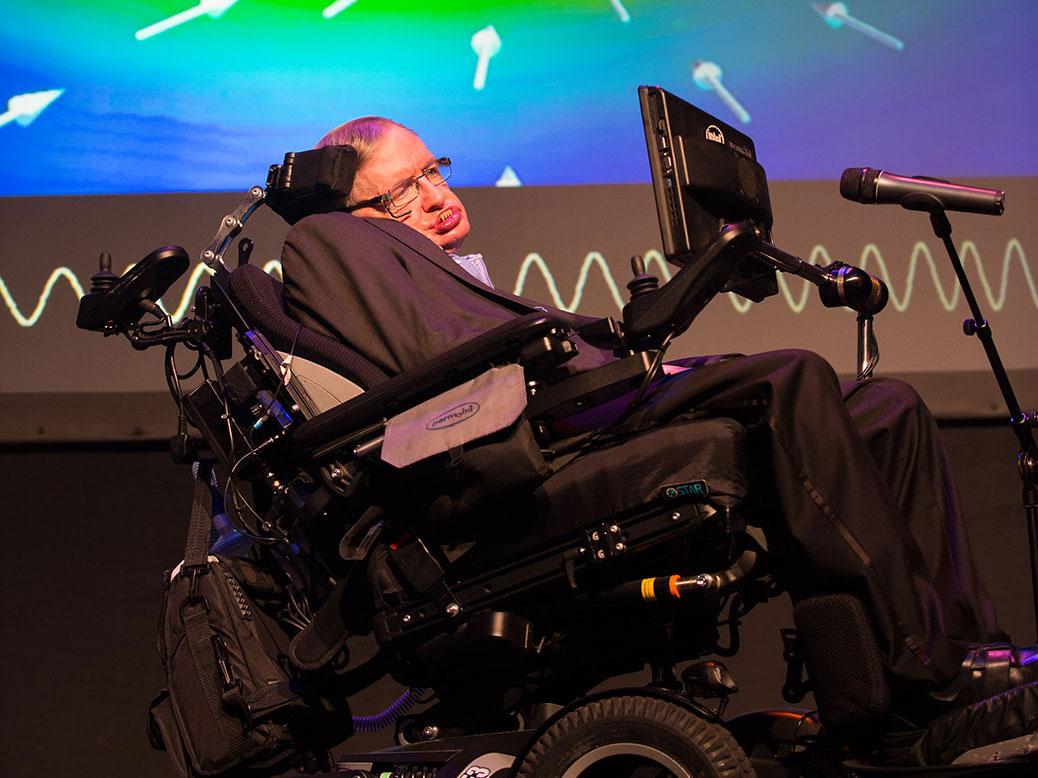Stephen Hawking working on spacecraft that could reach ‘Second Earth’ in 20 years
The tiny probe could send back images of a planet in the habitable zone of Alpha Centauri, the nearest star to our solar system, about 25 years after taking off

Your support helps us to tell the story
From reproductive rights to climate change to Big Tech, The Independent is on the ground when the story is developing. Whether it's investigating the financials of Elon Musk's pro-Trump PAC or producing our latest documentary, 'The A Word', which shines a light on the American women fighting for reproductive rights, we know how important it is to parse out the facts from the messaging.
At such a critical moment in US history, we need reporters on the ground. Your donation allows us to keep sending journalists to speak to both sides of the story.
The Independent is trusted by Americans across the entire political spectrum. And unlike many other quality news outlets, we choose not to lock Americans out of our reporting and analysis with paywalls. We believe quality journalism should be available to everyone, paid for by those who can afford it.
Your support makes all the difference.The renowned physicist Stephen Hawking is working on a spacecraft that can travel at a fifth of the speed of light – meaning it could reach the nearest star and send back images of a suspected ‘Second Earth’ within 25 years – in a bid to save humanity.
In a speech at the Starmus Festival, Professor Hawking warned humans must soon colonise another planet if we are to survive.
One explanation for why Earth has not been contacted by an advanced civilisations from another part of the Universe is that every time ‘intelligent’ life evolves it annihilates itself with “war, disease and weapons of mass destruction”, he said.
And in addition to the chance that we will meet this fate, Professor Hawking said the planet had become too small for our burgeoning population with its “physical resources … being drained at an alarming rate”. Climate change, an asteroid strike or some other kind of cataclysmic cosmic event also pose significant threats.
The proposed spacecraft, called a Star Chip, would be just a few centimetres in size with a lightsail weighing a few grams. It would be powered by an array of lasers based on Earth that would drive the tiny probe “on a beam of light” at about 100 million miles an hour, a fifth of light speed.
“Such a system could reach Mars in less than an hour, reach Pluto in days, pass Voyager [the space probe launched in 1977] in under a week, and reach Alpha Centauri in just over 20 years,” Professor Hawking said.
“Once there, the nano craft could image any planets discovered in the system, test for magnetic fields and organic molecules, and send the data back to Earth in another laser beam.
“This tiny signal would be received by the same array of dishes that were used to transit the launch beam, and return is estimated to take about four light years.
“Importantly, the Star Chips’ trajectories may include a fly-by of Proxima b, the Earth-sized planet that is in the habitable zone of … Alpha Centauri.”
The project, called Breakthrough Star Shot, was “a real opportunity for man to make early forays into outer space, with a view to probing and weighing the possibilities of colonisation”, he said.
And he admitted: “Of course, this would not be human interstellar travel, even if it could be scaled up to a crewed vessel. It would be unable to stop.
“But it would be the moment when human culture goes interstellar, when we finally reach out into the galaxy. And if Breakthrough Star Shot should send back images of a habitable planet orbiting our closest neighbour, it could be of immense importance to the future of humanity.”
Because it is travelling so fast any pictures taken by a camera on the Space Chip would be “slightly distorted” due to the effects of special relativity, as first described by Albert Einstein. This would be the first time anything has travelled fast enough to see such effects.
“We are standing at the threshold of a new era. Human colonisation on other planets is no longer science fiction. It can be science fact,” Professor Hawking said.
He warned the need to find a new home to colonise was being driven by threats that were “too big and too numerous” to be positive about the future.
The moon and Mars were possible locations but both had limitations, the Cambridge University academic said. The moon is small, has no atmosphere or a magnetic field to deflect solar radiation. Mars has also lost its magnetic field and much of its atmosphere.
He said humans should create a base on the moon by 2020 and send people to Mars by 2025. Interstellar travel for humans might be accomplished in the next 200 to 500 years, Professor Hawking added.
In the speech, he showed flashes of his sense of humour.
Considering the prospect of a Star Chip discovering life, he said “If there are beings alive on Alpha Centauri [the solar system] today, they remain blissfully ignorant of the rise of Donald Trump.”
On the failure of an advanced alien species to contact humans, he said he preferred the explanation that while primitive life was common, intelligent life was rare. He then added: “Some would say it has yet to occur on Earth.”
And extolling the virtues of the human attribution – “out most powerful attribute” – he said: “With this, we can roam anywhere in space and time. And I do.
“We can witness nature’s most exotic phenomena while in a car, snoozing in bed, or pretending to listen to someone boring at a party. And I do.”
Join our commenting forum
Join thought-provoking conversations, follow other Independent readers and see their replies
Comments